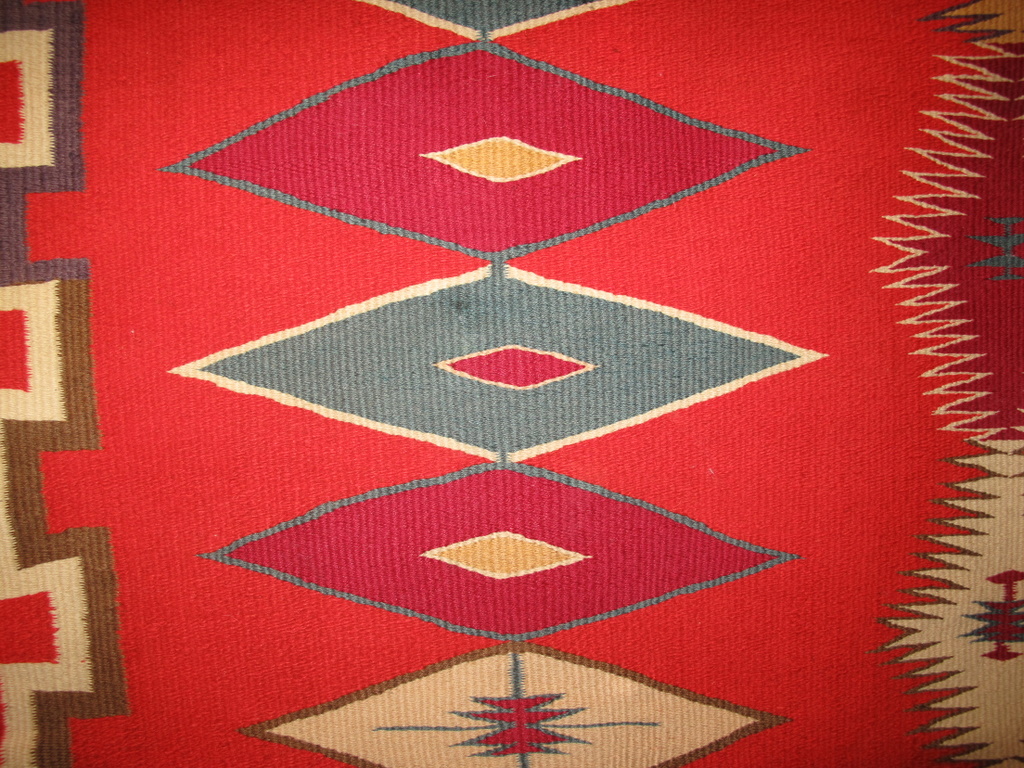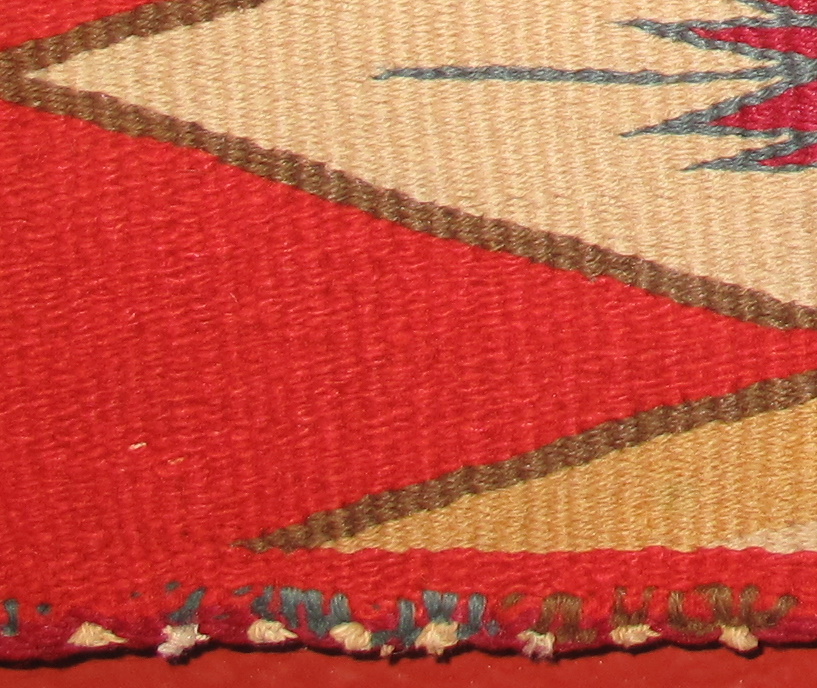The Brilliance of the Navajo Germantowns: Late Classic Weaving and Bayeta
Tempe, AZ Navajo Germantowns were woven during two overlapping periods identified as the Late Classic (1865-1880) and Transitional (1868-1895). Both periods are marked by increasing use of commercial materials and adaptation of designs from Rio Grande, Saltillo and other weaving traditions. During both periods, Germantown yarns were sometimes combined with other available weaving materials, most famously with raveled bayeta. Starting in the Late Classic period, the design geometries used extended from the wider than long Chief Blanket to the longer than wide serape more closely identified with the Hispanic cultures of the region.
The Late Classic weaving shown above is at Turkey Mountain Traders and clearly shows the influence of Rio Grande and Saltillo design. The bright red background yarns are raveled bayeta which has been respun (and possibly recarded). The pattern yarns are Germantowns. In the detailed photo below, I hope that you’ll be able to see the difference in the texture between the bayeta and the Germantown yarn. You’ll also see another aspect of Navajo weaving that was introduced during this period, a knotted finish at one end of the weaving, a departure from the traditional and time consuming closed warp finish that was deemed less important since the ends were covered by an added fringe, vestiges of which can be seen here. The downside of this technique was that it was not as durable as the traditional method, so this particular weaving is all the more remarkable because the knotted end is in good condition. Knotted finishes were largely abandoned as Navajo textiles began to be used as floorcoverings, but they’re still used to finish the modern Gallup throws that are woven for the tourist trade.
When a gallery or museum professional is trying to authenticate or date a textile, the analysis of the materials provides crucial evidence that combined with the pattern, techniques and provenance determines the age and estimated value of the piece. This weaving is an excellent case in point. A visual examination shows what the background yarns are very clearly different from the plied pattern yarns, but are they Navajo-churro wool that’s been aniline dyed or are they the fabled raveled bayeta? To definitively answer that question, we need to go into the lab and do some microscopic examination of the fibers and spectral analysis of the dye. The shorter industrially processed wool fibers in bayeta are quite different from long staple crimpless hand-processed Churro wool and the carminic acid that produces the color in cochineal forms a distinctive fingerprint that immediately identifies the dye source. For an interesting look at how this is done, you can check out the textile analysis pages at http://www.material-insight.com/NavajoBlanket.htm.
We have one more stop to make on our walk and we’ll be looking at a beautiful Wedge Weave from the Transitional Period at John C. Hill Antique Indian Art. Look for that installment on Sunday!
Hagoshíí (so long for now)
Mary Walker


